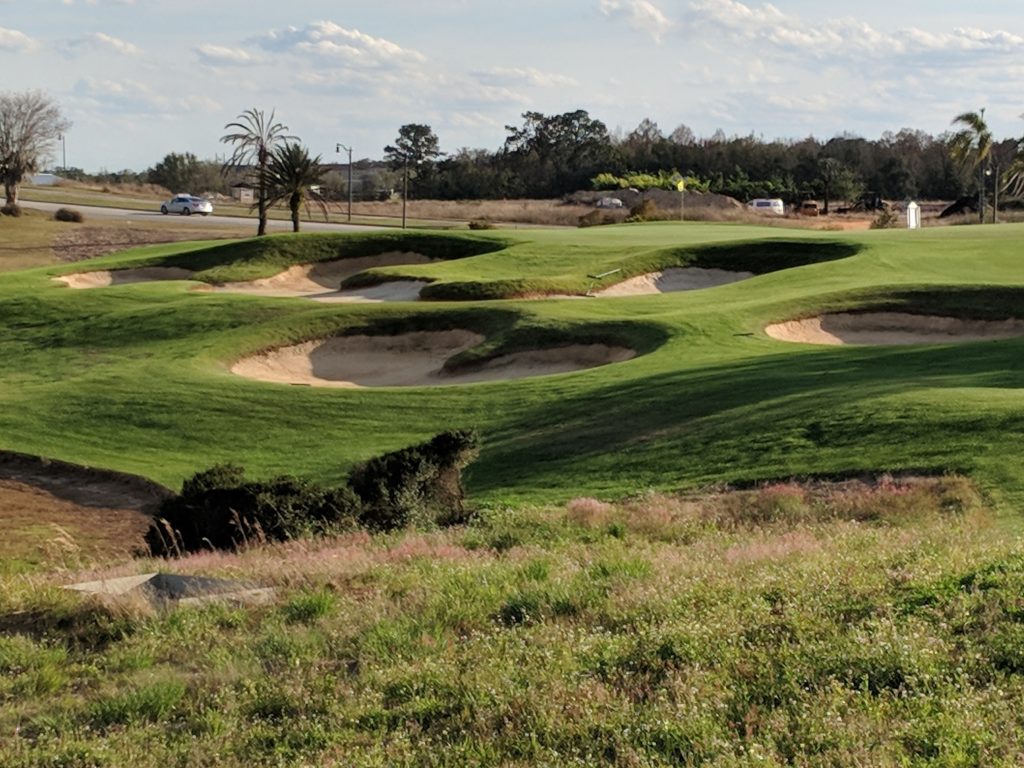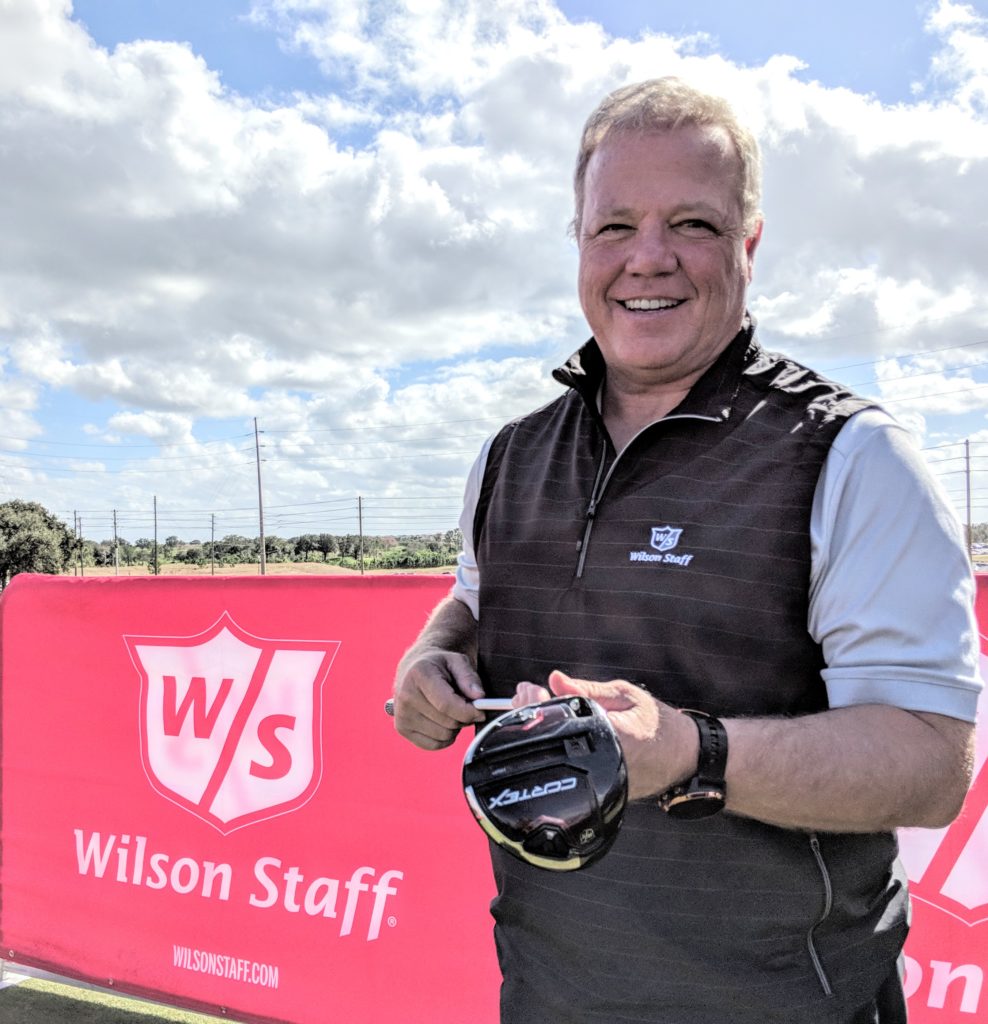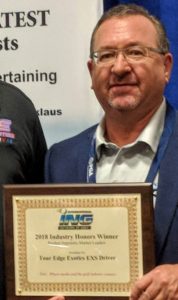Back in 2010 Tim Miles Sr. made a bold promotional move. He offered a free round to all Chicago Golf Show visitors at all of the courses that his company, Mundelein-based GolfVisions, was managing.
Looking back, Tom Corcoran – owner of the 35-year old show since 1997 — still calls Miles’ move “the wildly greatest promotion we’ve had.’’ That’s saying a lot, because Chicago has the oldest consumer golf show in the nation.
Miles, GolfVisions president and chief executive officer, liked the results, too. He has continued the program every year since then. The free golf enticement has been a popular feature with the show’s 15,000 to 20,000 annual visitors.
Those attending this year’s 36th annual show, running Feb. 22-24 at the Stephens Convention Center in Rosemont, will be offered a free greens fee at one of 15 courses under GolfVisions’ care, and that free round will cover the cost of a ticket to the show. With Miles getting more players to his courses, it’s a win-win situation for all concerned and this year the offering is even more special.
GolfVisions took over the management of Lake Bluff Golf Club on Jan. 1. That was a major step in a series of developments that very likely saved one of the best public facilities in the Chicago area from being shut down.
The course, owned by the Lake Bluff Park District, was having financial problems and Park District officials admitted that some basic improvements were long overdue. The threat of closing after the 2018 season was a real one. The Park District wanted $260,000 raised in the final half of 2018 and/or committed in 2019 to approve its opening for this year.
That triggered the creation of the Lake Bluff Community Golf Association, a group of about 50 concerned citizens who wanted to keep the course going.
Six members united to hold a golf marathon that raised $27,000. Then the group organized a 50th anniversary celebration for the course last August that drew 144 players and 250 dinner guests. It boosted the money raised to basically the year-end total — $126,000.
“We raised a big chunk of the money on that one night,’’ said Mike Galeski, one of the association leaders who has held prominent leadership roles in the staging of both a PGA Tour Champions event at North Shore Country Club, in Glencoe and the LPGA’s UL International Crown at Merit Club, in Libertyville.
The amount raised in 2018 was a start, and the course will open this year.
“It demonstrated community support,’’ said Galeski. “The Park District figured there must be enough interest to keep it.’’
The influx of new money led almost immediately to the start of work on the clubhouse.
“That building had not been touched in decades,’’ said Galeski, “and it is highly visible to people.’’
Billy Casper Golf had been managing the course. Its contract expired on Nov. 30. Shortly thereafter GolfVisions got involved. Eventually Miles and the Park District negotiated a five-year lease agreement that additionally has two five-year options. Lake Bluff has been saved – at least for the immediate future – and Chicago Golf Show visitors might be able to get a free round on the course. Those who do will see what a gem this layout is. They’ll want to return. At least that’s my prediction, and Miles is hopeful.
“It’s certainly an interesting deal, but it’s not a slam dunk,’’ said Miles. “It’ll be challenging, but a lot of fun.’’
Regardless of what the future holds, the re-opening of Lake Bluff is a feel-good story and anything of that nature is a big boost for golfers going into 2019. GolfVisions was founded in 2001, and Miles’ perspective on 2018 presents a most sobering reflection of the sport both here and beyond.
“It was a horrible year,’’ he said. “We had the worst year I’ve ever seen in Chicago in 2018, and it wasn’t just Chicago. It was also from an industry standpoint. Play was anywhere from 10 to 18 percent down. We had a record year for the number of playable days. There were 35 fewer playable days than in 2017. Everybody wanted to see that year gone — and it’s gone.’’
That’s a good thing. With the end of 2018 has come the beginning of 2019, and there’s plenty of optimism for the months ahead.
“We’ll continue the fund-raising issue for future improvements,’’ promised Galeski. “Our players have demonstrated that they want to keep participating in events.’’
Lake Bluff is a par-72 track that plays at 6,589 yards from the tips with a slope of 124 and rating of 71.3. A parkland-style layout, it features mature trees with water coming into play on several holes.
“It’s a nice course – easy to walk and easy to ride,’’ said Miles. “It’s a course people should be wanting to play.’’
GolfVision operates other courses in that category, some of which – Bittersweet in Gurnee, Bonnie Brook in Waukegan and Midlane in Wadsorth – are in close proximity to Lake Bluff.
Other public 18-holers in the GolfVisions portfolio are Broken Arrow, in Lockport; Chapel Hill, in Johnsburg; Foxford Hills, in Cary; Oak Grove, in Harvard; Settler’s Hill, in Batavia; Tanna Farms, in Geneva; and Village Green, in Mundelein.
GolfVisions also operates three nine-holers in Illinois – Deer Valley in Big Rock, Greenshire in Waukegan and HeatherRidge in Gurnee – as well as a private club, 18-hole Danville Country Club. The firm’s portfolio also includes courses in Indiana, Michigan and Florida.
As always, this year’s Chicago Golf Show isn’t just about wangling a free round from GolfVisions. There’ll be about 300 exhibitors, which include local course operators, equipment manufacturers and travel destinations. The latter includes Indiana’s French Lick Resort, the show’s presenting sponsor.
The Illinois PGA, Chicago District Golf Association, Western Golf Association and Illinois Junior Golf Association will also be represented.








